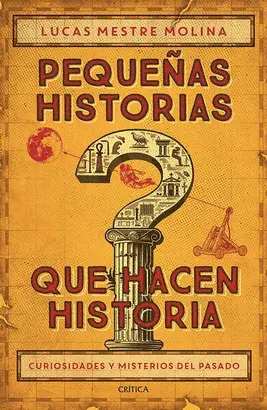
- Editorial:
- ATRIA BOOKS
- Materia:
- Historia y Mitología
- ISBN:
- 978-1-4767-2877-3
A HISTORY OF NEW YORK IN 101 OBJECTS
ROBERTS, SAM
The vibrant story of America's great metropolis, told through 101 distinctive objects that span the history of New York, all reproduced in luscious, full color.
A wooden water barrel and an elevator brake. A Checker taxicab and a conductor's baton. An oyster and a mastodon tusk. Inspired by "A History of the World in 100 Objects," "The New York Times' "Sam Roberts chose fifty objects that embody the narrative of New York for a feature article in the paper. Many more suggestions came from readers, and so Roberts has expanded the list to 101. Here are just a few of what this keepsake volume offers:
- The Flushing Remonstrance, a 1657 petition for religious freedom that was a precursor to the First Amendment to the Constitution.
- Beads from the African Burial Ground, 1700s. Slavery was legal in New York until 1827, although many free blacks lived in the city. The African Burial Ground closed in 1792 and was only recently rediscovered.
- The bagel, early 1900s. The quintessential and undisputed New York food (excepting perhaps the pizza).
- The Automat vending machine, 1912. Put a nickel in the slot and get a cup of coffee or a piece of pie. It was the early twentieth century version of fast food.
- The "I Love NY" logo designed by Milton Glaser in 1977 for a campaign to increase tourism. Along with Saul Steinberg's famous "New Yorker" cover depicting a New Yorker's view of the world, it was perhaps the most famous and most frequently reproduced graphic symbol of the time.
Unique, sometimes whimsical, always important, "A History of New York in 101 Objects" is a beautiful chronicle of the remarkable history of the Big Apple that will enrich your mind and rekindle memories.







